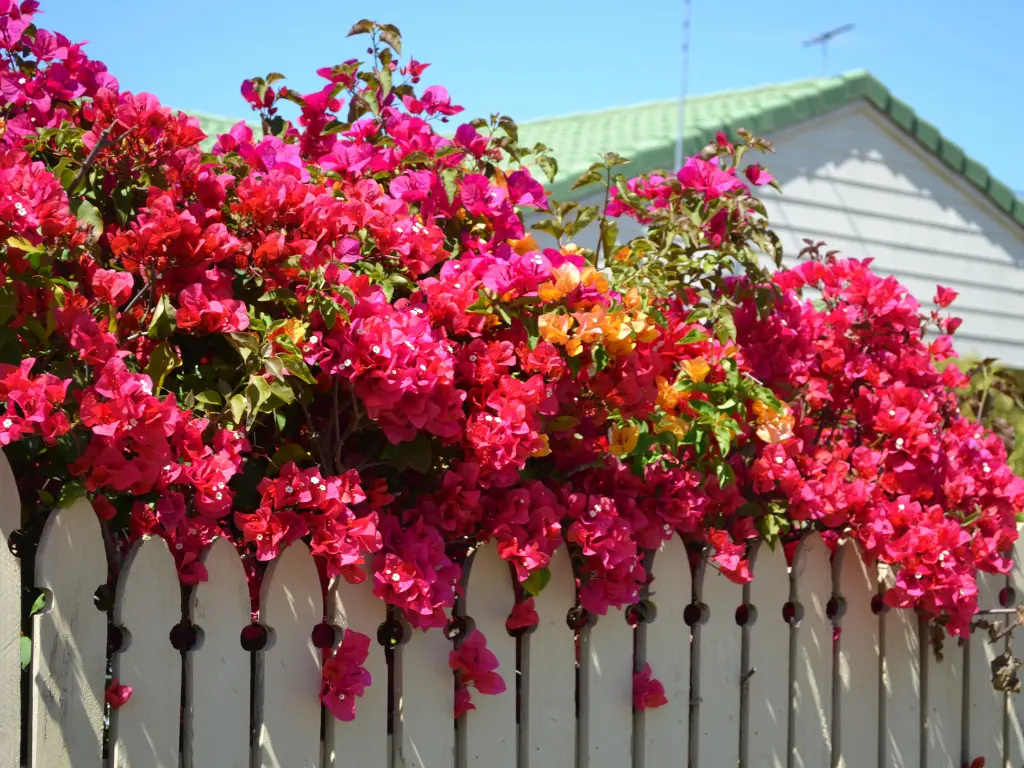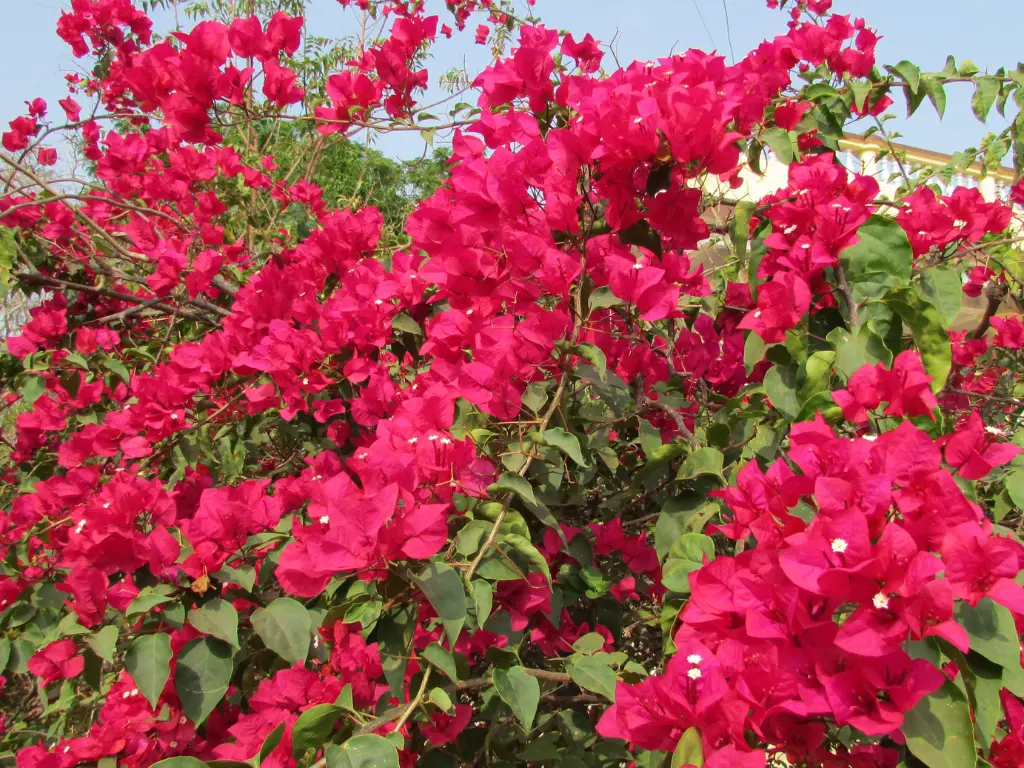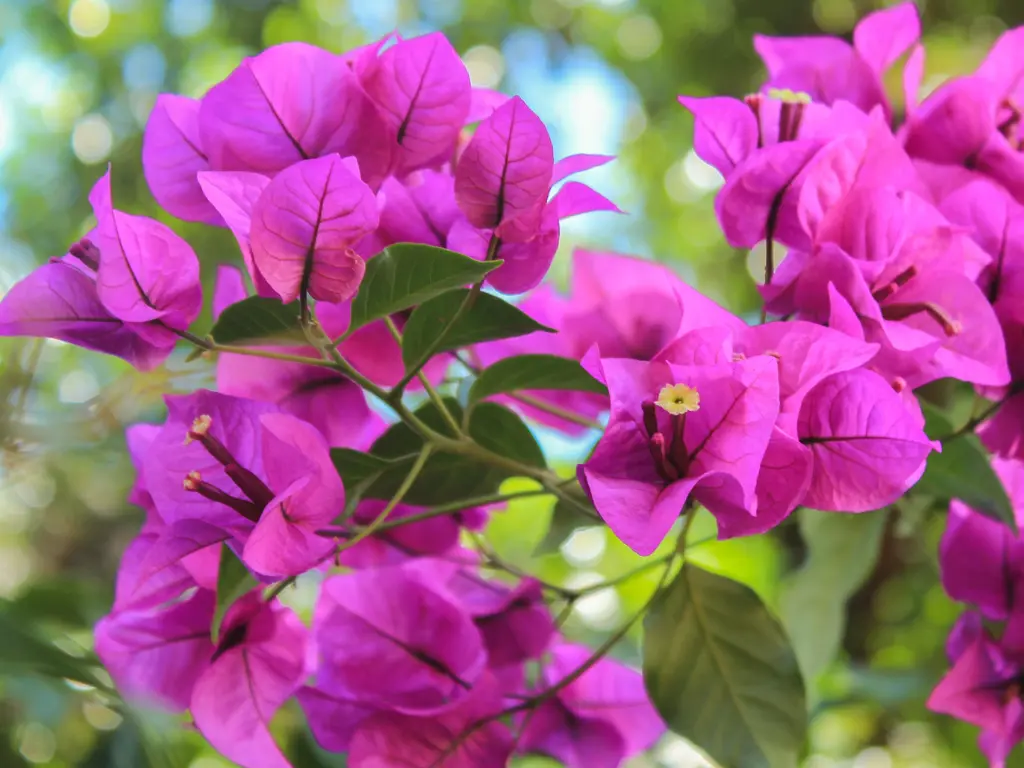Bougainvilleas are beautiful, colorful plants that can transform any garden into a vibrant oasis. But what if your bougainvillea isn’t blooming as expected? You’ve been waiting, watering, and caring for it, but those bright purple, pink, or red flowers just aren’t showing up. If this sounds like a situation you’re dealing with, don’t worry – you’re not alone!
Bougainvilleas are known for their spectacular displays in Mediterranean garden settings, but they can be notoriously finicky about flowering. The good news? Once you understand what triggers their blooming cycle, you can get Bougainvillea to bloom year-round, even the most stubborn plant into a cascade of color.
If you’ve asked yourself, “Why isn’t my bougainvillea blooming?” or “How do I make my bougainvillea bloom again?”, you’re in the right place. In this guide, I’ll share expert tips on how to get your bougainvillea to bloom, force it to flower, and ensure that your garden flourishes with stunning blooms year-round.
Why Isn’t My Bougainvillea Blooming?

Bougainvilleas aren’t like your average garden flowers. In their native South American habitat, these drought-tolerant flowering vines bloom in response to specific environmental triggers, not just because the season is right.
These spectacular plants produce their colorful “flowers” (actually modified leaves called bracts) surrounding tiny true flowers as a reproductive strategy. The vibrant display attracts pollinators, ensuring the plant’s survival. But to trigger this survival response, the plant needs to feel a certain urgency.
In nature, bougainvilleas often bloom most profusely after a dry period followed by rainfall. This natural cycle tells us something important about how to care for these plants in our gardens.
Bougainvilleas are hardy plants, but they do have specific needs when it comes to blooming. If your bougainvillea isn’t producing the beautiful flowers you’re used to, here are some common reasons why:
1. Lack of Sunlight
Bougainvilleas are sun-loving plants. They thrive in full sunlight and require at least 5 hours of direct sun each day to bloom well. If your plant is placed in a shady spot, it might not produce flowers.
2. Poor Soil Conditions
Bougainvilleas prefer well-drained soil with a slightly acidic to neutral pH. If the soil is too heavy or retains too much moisture, the roots can become waterlogged, preventing healthy growth and blooming.
3. Over-Watering or Under-Watering
Bougainvilleas are drought-tolerant plants. Over-watering can lead to root rot, while under-watering can stress the plant, affecting its ability to bloom. Finding the right balance is key!
4. Incorrect Pruning
Pruning bougainvilleas incorrectly can reduce the chance of blooming. You want to prune your plant after the blooming season, trimming away any dead or weak branches while keeping the healthy ones.
Understanding these factors is the first step toward solving your bougainvillea’s blooming problems. Now, let’s dive into the tips that will help encourage your plant to bloom more often.
Essential Tips to Get Bougainvillea to Bloom
Getting your bougainvillea to bloom isn’t about just one thing – it’s a combination of factors that need to be addressed to promote healthy growth and vibrant flowers. Here are some tips that will help:
1. Provide Optimal Sunlight

Is your bougainvillea getting enough light? Insufficient sunlight is a major cause of poor blooming. Bougainvilleas need full sunlight to thrive.
Bougainvilleas are sun-lovers—they need:
-
A minimum of 6 hours of direct sunlight daily
-
Preferably full sun exposure for most of the day
-
More sun equals more flowers—it’s that simple
If your plant gets plenty of light but still doesn’t bloom, you’ll likely see other signs of light deficiency: longer spaces between leaves (internodes), reaching growth, and paler foliage.
If you live in a region with cooler climates, consider placing your bougainvillea near a south-facing wall that will absorb heat and reflect it onto the plant.
2. Proper Pruning Techniques
Pruning is vital to encourage bougainvillea blooms. After the blooming season, cut back any weak, dead, or woody growth. This will allow the plant to focus its energy on new growth and flower production. Keep the plant’s shape compact and well-maintained to ensure maximum flowering potential.
-
Best time to prune: Late winter or early spring, just before the growing season begins
-
Worst time to prune: During active blooming periods or when flower buds are forming
-
Light pruning: Can be done anytime to shape the plant without significantly affecting flowering
If you’re in a warm climate where bougainvilleas grow year-round, you can time your major pruning to occur about 6-8 weeks before you want a flush of blooms.
How you prune matters as much as when:
-
Remove no more than one-third of the plant at once
-
Make cuts just above leaf nodes to stimulate new branching
-
Pinch tips of new growth to encourage bushiness and more flowering points
-
Remove any dead or diseased branches completely
Wear sturdy gloves when pruning bougainvillea—those thorns are serious business!
3. Soil Requirements for Bougainvillea Growth
Bougainvilleas thrive in slightly acidic to neutral, well-drained soil. Use a mix that drains quickly to avoid waterlogging, which can damage the roots. If your soil retains moisture, consider adding sand or perlite to improve drainage.
Read more about how to Prepare Soil to Plant here.
4. Watering Strategies
Bougainvilleas are drought-tolerant and prefer to dry out a bit between waterings. Be careful not to over-water – let the soil dry out between watering sessions. During dry periods, water the plant deeply but infrequently, allowing the roots to soak up the moisture.
Seasonal Watering Adjustments for Better Flowering
Adjust your watering schedule based on:
-
Summer: More frequent dry-wet cycles as temperatures rise
-
Winter: Drastically reduce watering, especially in cooler regions
-
Rainy seasons: Protect plants from excessive rainfall if possible, or ensure excellent drainage
Remember that container bougainvilleas dry out faster than those planted in the ground. Check container plants more frequently, but still allow them to experience the dry part of the cycle before watering again.
5. Fertilization Tips for Bougainvillea

Feed your bougainvillea with a balanced fertilizer high in phosphorus and potassium but low in nitrogen. Excessive nitrogen can lead to lots of leaves but very few flowers. Fertilize during the growing season and stop feeding during the dormant period to allow the plant to rest.
Follow this simple schedule for best results:
-
Spring: Begin fertilizing when new growth appears, using a high-phosphorus formula
-
Summer: Apply bloom-boosting fertilizer every 4-6 weeks
-
Fall: Reduce fertilization as growth slows
-
Winter: Stop fertilizing completely in cooler regions; minimal feeding in warm zones
The key is to avoid high-nitrogen fertilizers during the pre-bloom period, as these will stimulate leafy growth at the expense of flowers. Many southern garden flowers, including bougainvillea, respond better to less nitrogen and more phosphorus when you want blooms.
Climate Considerations and Location
If you live in USDA Hardiness Zones 9-11, you’re in the perfect region for bougainvilleas to flourish outdoors year-round. However, if you live in a cooler climate, you can still grow bougainvilleas by planting them in pots and moving them inside during the colder months.
Best Zones for Bougainvillea Growth
Bougainvilleas thrive in tropical and subtropical climates where the temperatures stay warm year-round. If you live in a region with cold winters, bring your bougainvillea indoors or place it in a sunny location like a south-facing window.
Forcing Bougainvillea to Bloom in Cold Weather
If you’re trying to get your bougainvillea to bloom in winter, you might need to manipulate the environment. You can force flowering by exposing your plant to cooler temperatures and reducing the amount of water it gets. These conditions simulate the natural dormancy period, encouraging the plant to bloom when spring arrives.
Troubleshooting Common Bougainvillea Problems
Sometimes, even with the right care, bougainvilleas may still face issues that can affect their blooming. Here are some common problems and how to address them:
1. Bougainvillea Dropping Flowers Prematurely
If your bougainvillea’s flowers are falling off too soon, it could be a sign of stress. This could be caused by too much water, not enough sunlight, or sudden temperature changes. Make sure your plant has enough light and avoid over-watering.
2. Yellowing Leaves and How It Affects Blooms
Yellowing leaves can be a sign of a nutrient deficiency or overwatering. To help your bougainvillea bounce back, reduce the watering frequency and ensure that the plant is getting enough nutrients, particularly potassium, which promotes healthy blooms.
Can You Force Bougainvillea to Bloom Faster?
Bougainvilleas can be encouraged to bloom faster by manipulating environmental conditions. While it’s important to note that patience is key, here are a few tips to speed up the blooming process:
1. Temperature and Light Manipulation
Bougainvilleas tend to bloom more when subjected to dry, cooler conditions followed by a return to warmer weather. If you’re trying to force your bougainvillea to bloom faster, reduce the temperature slightly and limit the watering. Once the plant has been under these stress conditions for a few weeks, it should start to bloom.
2. Use of Specific Fertilizers
Certain fertilizers, especially those high in phosphorus, can help promote blooming. Avoid high-nitrogen fertilizers as they encourage leaf growth instead of flowers.
Conclusion
If you’ve been wondering how to get your bougainvillea to bloom or why it isn’t blooming, follow these expert tips to ensure your plant thrives and bursts into vibrant color. Bougainvilleas need the right balance of sunlight, water, soil, and care to flourish and produce flowers. Be patient, and remember that blooming takes time!
By adjusting your care routine and addressing environmental factors, you can force your bougainvillea to bloom more frequently, bringing stunning color to your garden year-round. Keep an eye on your plant’s needs, and with the right care, you’ll soon be rewarded with breathtaking flowers.
Frequently Asked Questions
-
Why is my bougainvillea not blooming despite full sunlight?
-
Even with sunlight, bougainvilleas need well-drained soil and proper watering. Ensure you are not over-watering, as it could affect blooming.
-
-
How do I get bougainvillea to bloom in winter?
-
Bougainvilleas may need cooler temperatures and reduced watering to simulate the dormant period. Bring them indoors or adjust outdoor conditions accordingly.
-
-
How often should I prune my bougainvillea to promote blooms?
-
Prune your bougainvillea after the blooming season to remove dead or weak branches. This encourages healthy growth and new flowers.
-
-
Can bougainvillea bloom multiple times a year?
-
Yes! Bougainvilleas can bloom several times a year, especially when they receive the right care and optimal growing conditions.
-
